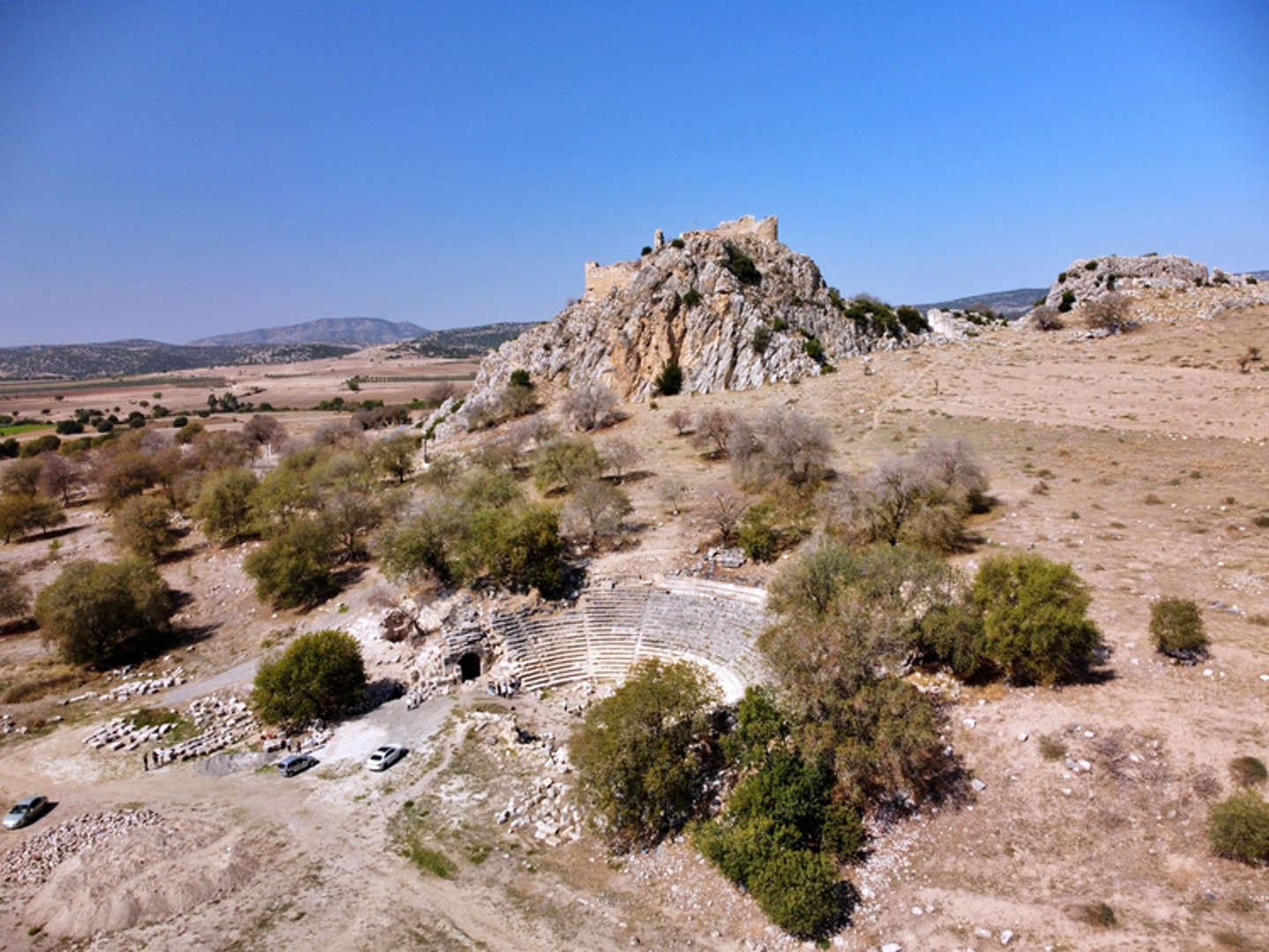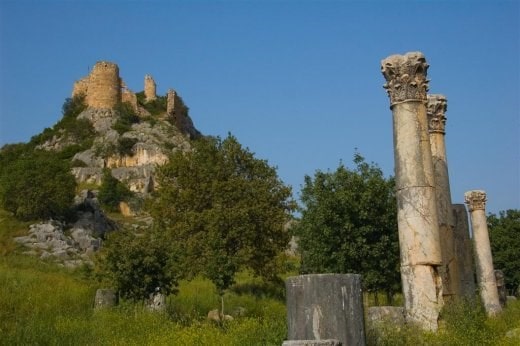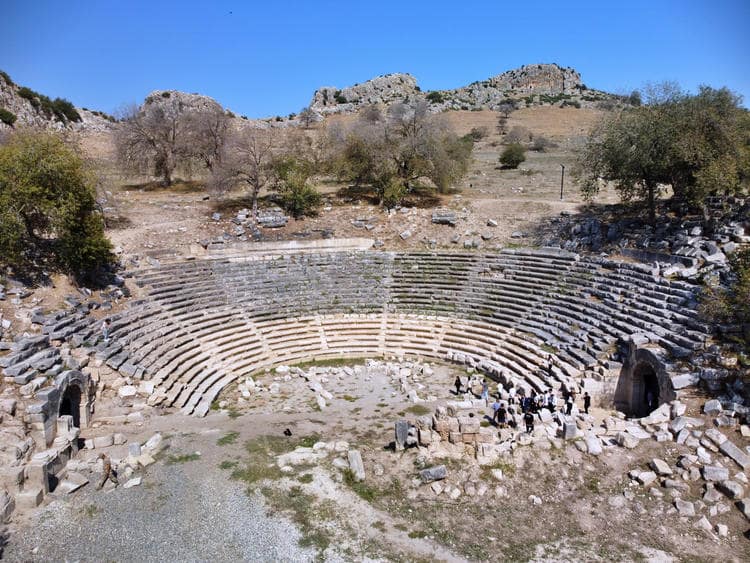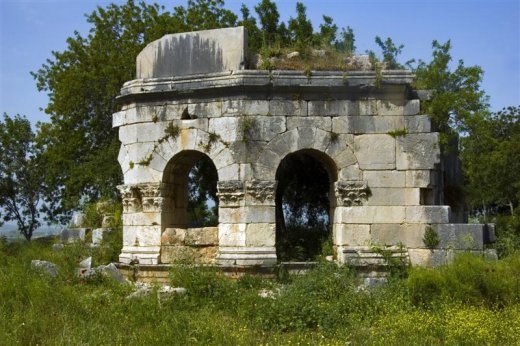
Kastabala Ancient City, the “Ephesus” of Çukurova, whose name is determined by an Aramaic inscription
Kastabala, located about 12 kilometers north of the city center of Osmaniye in the southern region of Türkiye, is an ancient city with a history dating back approximately 2,000 years.
Kastabala, situated to the northwest of the Ceyhan River, often referred to as the “Ephesus of Çukurova.”
The Kastabala archaeological site is situated at the foot of a 13th-century castle known as Bodrum Castle. The site was first visited and described in detail by the British diplomat E.J. Davis in 1875.
In 1890, the British researcher Th. Bent, who examined inscriptions found in the area, revealed that the ancient name of the city was Hierapolis.

Ancient travel writers like Ptolemaeus and Plinius mentioned Kastabala as one of the ancient cities of the Cilician Plain, situated after Anazarbos and before Epiphaneia. However, the geographer Strabo made the mistake of assuming there was a second Kastabala in the Taurus Mountains.
The name “Kastabala” is derived from Anatolian languages, and the oldest written document mentioning this name is an Aramaic boundary inscription found near the village of Bahadırlı, about 20 kilometers north of Kastabala in 1961.
In an inscription dating back to the 5th and 4th centuries BC, which was the official script of the Persians who ruled Anatolia at the time, it is mentioned that a portion of the land of the Anatolian mother goddess Kubaba, also known as Pirvaşua, belonged to Kastabala. It is not entirely clear whether this refers to a city or a piece of land.

Kastabala is first mentioned with the name Hierapolis on coins minted during the reign of IV. Antiochos Epiphanes of the Seleucid kings (175-164 BC). Antiochos gave the city the name “Sacred City” because of the temple of the goddess “Perasia,” which had been worshipped in the city for a long time. It is likely that the name “Perasia” is derived from the ancient Pirvaşua mentioned in the Aramaic inscription, whose roots go back to the Hittite period.
Strabo, an ancient geography writer from Amaseia who lived during the Roman period, mentions an interesting tradition associated with the worship of the Perasia goddess.

According to Strabo, the priestesses of the goddess would walk over burning coals with bare feet during religious ceremonies without getting burned. Similar rituals are still practiced in India, the Pacific Islands, Central Italy, and among some community groups in Thrace. The depictions of Perasia on Kastabala coins and dedication inscriptions offered to Perasia in Kastabala confirm that this goddess’s cult center was in Kastabala. She is honored in these inscriptions with various titles, with her most important attribute being the torch.
According to Strabo, in Kastabala, Perasia was equated with Artemis, a familiar deity in the ancient Greek pantheon. The identification of Artemis with Persia, a local Anatolian goddess with roots going back to the Hittite period, is one of the most remarkable examples of the syncretism seen in various places in Anatolia.
Source: Republic of Türkiye Osmaniye Governorship
You may also like
- A 1700-year-old statue of Pan unearthed during the excavations at Polyeuktos in İstanbul
- The granary was found in the ancient city of Sebaste, founded by the first Roman emperor Augustus
- Donalar Kale Kapı Rock Tomb or Donalar Rock Tomb
- Theater emerges as works continue in ancient city of Perinthos
- Urartian King Argishti’s bronze shield revealed the name of an unknown country
- The religious center of Lycia, the ancient city of Letoon
- Who were the Luwians?
- A new study brings a fresh perspective on the Anatolian origin of the Indo-European languages
- Perhaps the oldest thermal treatment center in the world, which has been in continuous use for 2000 years -Basilica Therma Roman Bath or King’s Daughter-
- The largest synagogue of the ancient world, located in the ancient city of Sardis, is being restored











Leave a Reply